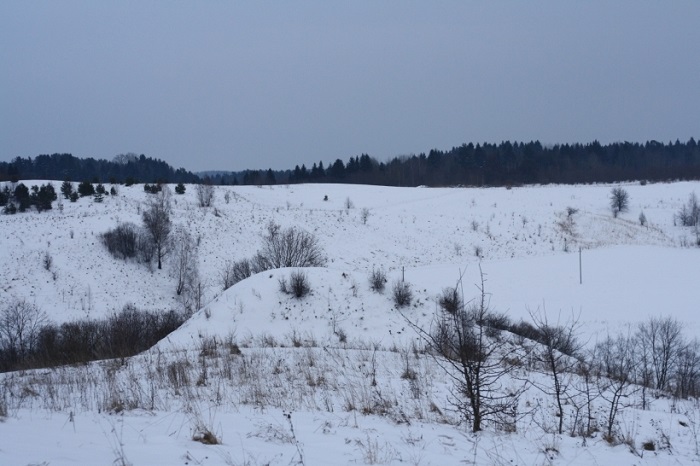The hillfort (Žydkapis) is situated on a promontory of the highlands on the left bank of the Žiežmara River. The elongated platform runs east-west, measuring 3 meters in length at the center, 7 meters at the eastern edge, and 25 meters wide at the western end, with a central elevation of up to 2 meters. A significant portion of the eastern end has been washed away by the Žiežmara. On the western side, a 24-meter-long, 3.5-meter-high, and 15-meter-wide rampart has been constructed. The outer slope of the rampart, which is 5.5 meters high, descends into a 25-meter-wide, 2-meter-deep ditch. The slopes are steep, ranging from 16 to 18 meters in height.
The hillfort has been damaged by plowing, and its eastern part has been washed away. It is now overgrown, with scattered deciduous trees on the eastern slope.
At the eastern-northeastern
foothills, there is a 0.3-hectare settlement where hand-molded and wheel-thrown pottery has been found.
The hillfort dates back to the 1st millennium to the early 2nd millennium.
The hillfort is known as Žydkapis. P. Tarasenka recorded a story about an altar with an eternal flame that was kept on the hillfort. There is also a legend that a rabbi and his twelve sons were buried here long ago. It was said that the Jews piled the burial mound with their hats, and it was considered a sacred place where they would gather and lament during festivals. According to E. Šturms and K. Avižonis, Žydkapis is associated with religious rituals.
It can be reached by taking road No. 4717 from Paparčiai towards Šešonys for 800 meters downhill (it is 120 meters to the left (north) before the Žiežmara), and it is visible from the road.




 Entertainment
Entertainment
 Sightseeing
Sightseeing
 Food establishments
Food establishments





























 54.903778, 24.735944
54.903778, 24.735944
 Get directions
Get directions









